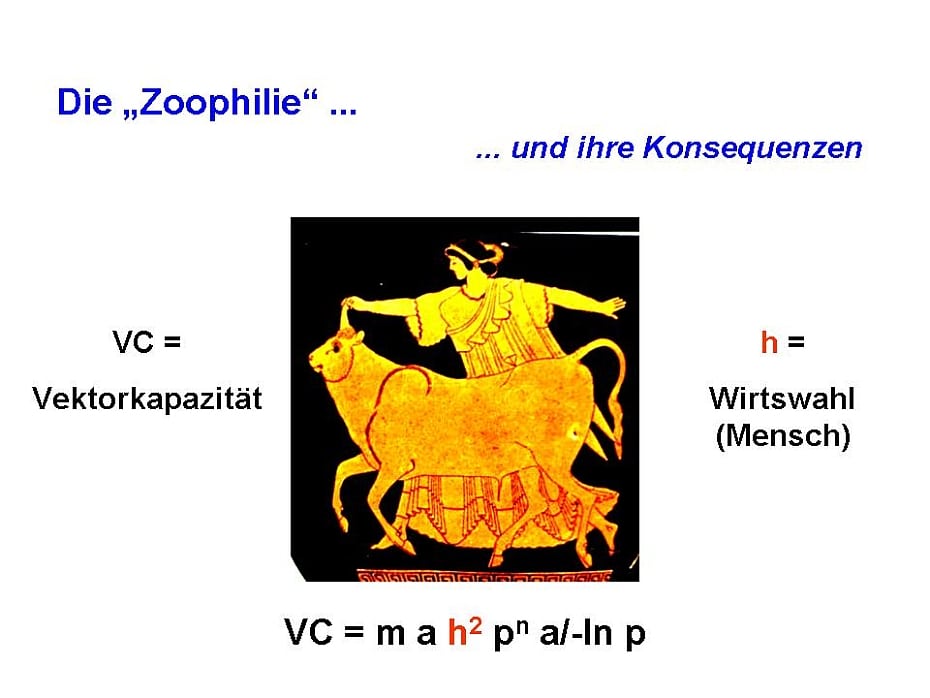Zooprophylaxis by diversion of flies and crossprotecting immunity
The term zooprophylaxis has been introduced to describe two diffent ways in which animals can protect man from the transmission of diseases:
- by diversion of the bloodseeking flies to a non-human bait.
- protection by cross-reacting immunity caused by a non-human parasite, that is transmitted to man, but does not develop. ‘Vaccination’ of man by using the bovine smallpox virus (vacca, lat = cow) is the classic example.
Zooprophylaxis by divertion of bloodseeking flies from man to a non-human source of blood considerably reduces the vectorial capacity of a vector population:

Zooprophylaxis against malaria in the river Rhine valley (A. Renz)
A good example for the beneficial effects of zoopropylaxis, combined with other control measures, is the eradication of malaria in the upper river Rhine valley in the 19th century. The Rheinkorrektur by Johann Gottfried Tulla (http://de.wikipedia.org/wiki/Rheinbegradigung) between 1817-76 transformed the former inundation areas and marshes into fertile land, which can be used for grazing cattle and crop farming. The Anopheles breeding possibilities were reduced and the breeding sites separated from the human settlements. Socio-economic development contributes to this success.
Cattle, which are almost twice as attractant for S. damnosum s.s. and S. squamosum as is the human bait, can therefore strongly reduce the risk of onchocerciasis transmission, if they are staying between the human settlements and the Simulium breeding river.:

modified from Renz et al. 1994, mathematical model by K. Dietz and M. Eichner, based on our data

Children and cattle in a river at Bombe, near Touboro. Simulium flies prefer to bite on cattle. This reduces their vectorial capacity drastically. (photo A. Renz)
Epidemiological data from Northern Cameroon also suggest, that the crosstransmission of bovine Onchocerca ochengi parasites to man can provide some degree of protection (Renz et al. 1994, Wahl et al. 1998). Thus, on the Adamaoua mountain, which is an area of high cattle stocking density, the endemicity of human onchocercisis is very low, despite important Simulium vector population densities.
sources: onchocerciasis: WHO; bovine model and transmission A. Renz; illustrations by Alfons Renz



Leave a Reply
Want to join the discussion?Feel free to contribute!